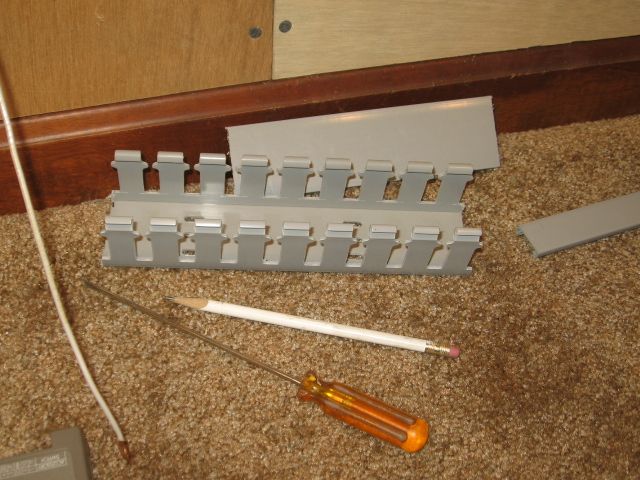Not sure it's an appropriate solution to your particular situation, but...
I often use copper foil tape where the routing and retention of insulated wire is problematic. For example, on the interior of buildings....especially multi-story...I'll attach a couple of buss runs along a wall/ceiling to which I can usually solder the bulb/LED wires for lighting. Then I just solder wires to the foil ends at the base of the structure.
One of our customers (LHS) has even used copper foil tape slit to narrow widths and laid in parallel runs onto the roof, sides, even floor of HO engines and passenger cars for creating a less bulky/intrusive DCC/sound/lighting cable routing. (Applying a layer of electrical tape or liquid insulation over exposed foil runs ensures against shorts.)
On the layout, I had an MTH crossing/flasher pair that were mounted to the plywood table. Their location was not conducive to immediately running wires into adjacent holes and fishing them through some obstacles below. I simply laid copper foil tape runs on the top table surface over to a more convenient point for attaching wires from below. Short jumpers soldered from the accessory to the foil completed the job. The foil was so thin that simple scenery materials applied thinly covered it all.
Copper foil tape is readily available from several modeling/electrical sources. It probably shouldn't be used, though, in high current applications. All in all I've found several nifty uses for the stuff.
Just a thought. FWIW, always.
KD



![1-1-2-in-Bridle-Ring-Wood-Screw[1] 1-1-2-in-Bridle-Ring-Wood-Screw[1]](https://ogrforum.com/fileSendAction/fcType/0/fcOid/37611054583876043/filePointer/37611054666638924/fodoid/37611054666638919/imageType/MEDIUM/inlineImage/true/1-1-2-in-Bridle-Ring-Wood-Screw%255B1%255D.jpg)
![1-1-2-in-Bridle-Ring-Wood-Screw[1] 1-1-2-in-Bridle-Ring-Wood-Screw[1]](https://ogrforum.com/fileSendAction/fcType/0/fcOid/37611054583876043/filePointer/37611054666638924/fodoid/37611054666638919/imageType/SQUARE_THUMBNAIL/inlineImage/true/1-1-2-in-Bridle-Ring-Wood-Screw%5B1%5D.jpg)














